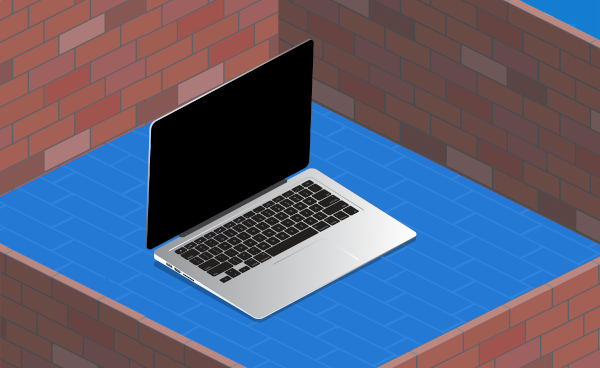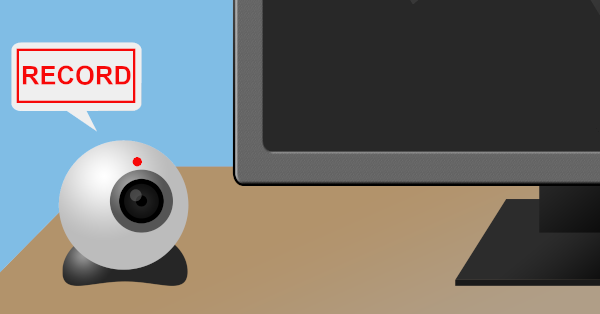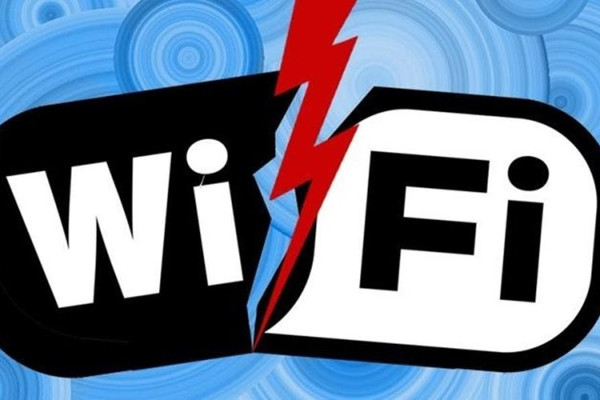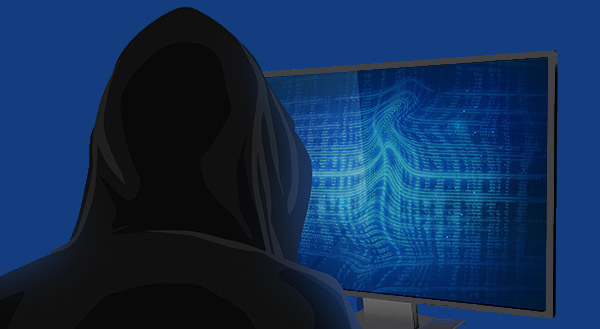Cyberattacks and data breaches are happening 24/7 all around the world and no one is immune. Your business needs to protect its networks and systems and secure its sensitive and confidential information. But how much do you know about the types of cybercriminal out there. This article discusses the biggest threats and what the bad hackers are after. Continue reading
Tag Archives: hacker
What is a Firewall and Why Do They Matter?

Hearing “firewall” in the context of computing can be confusing. This blog article aims to explain what a firewall is and how it will benefit your business. Continue reading
The ”You Have Been Watching Porn” Email Scam

A number of our clients have received an email claiming that they have been hacked and that the hackers have video taped them watching porn. To stop the hacker distributing the so called video to all their friends, they demand a ransom payment. Continue reading
Why Hackers Target Small Businesses

Hackers today have many ways in which to attack small businesses and business owners. Many hackers attempt to gain information or attack businesses with malware, viruses or phishing attacks. One or more of these techniques can be combined with gaining physical access in an attempt to steal information and data from vulnerable firms.
This articles will help you identifying precisely how criminals target businesses to help protect you from the most devastating attacks out there.
Even Big Business Get Hacked! Make Sure Your Business Doesn’t Suffer the Same Fate

Up to 500 million travellers details may be compromised as hotel chain Marriott International have announced a security breach within their guest database. Researchers alerted the firm to a vulnerability that has granted hackers access to the hotel chain’s database systems since 2014. Continue reading
Why You Need A Multi Layered Approach To Security

Firewalls are a well-known security essential, and we are certainly big fans, but did you know a firewall alone is not enough to keep your business safe? It is like building a fence around your house to keep the burglars out: You feel safe, private and secure… but the reality is, anyone with a ladder, enough motivation or ninja skills poses a real threat. That is why despite every networked business having a firewall in place, security breaches are increasing at an alarming rate – further protections are still needed.
Without these additional protections, once the firewall is beaten or bypassed it’s like a fox in a hen house. The bad guys are free to view and download files, make changes, and even take over your systems completely. That’s why computer security works best when it’s multi-layered. When one protection fails, the next layer kicks in to keep your business safe. And then the next, and the next…but that doesn’t mean you need CIA level security that gets in your way.
A few strategic, well-planned measures can provide all the protection your business needs to keep operating without costly downtime. While it’s cool to imagine a system so secure you’ll be opening doors with retinal scanners the reality is infinitely more usable and affordable. In fact, we’ll help you choose the perfect measures that blend invisibly into your existing processes, boosting security without affecting productivity. Take a look at some of our offerings:
Proper firewall device
While not enough by itself, your firewall is still your first line of defence. However, there’s a huge difference between the generic firewall that comes standard with your broadband router and a dedicated hardware firewall appliance. Our technicians will work with you to identify which firewall is suitable for your business.
Corporate Grade Antivirus Software
A free antivirus program might be ok for home use but do you really want a free program with no backup or support protecting your confidential business data and financial information?
Access restrictions
We’ll help you give employees access to only the files they need to do their job. It’s not a matter of trust, but rather one of security. If they were the one to accidentally let the attackers through the firewall, perhaps by clicking an email link, you’re then able to limit the damage. Without this added layer of protection, it’s relatively easy to access any and all files.
Encrypt confidential files
More secure than simply password locking a file, this uses a secret ‘key’ to scramble the files and their contents, so that when anyone else tries to view them all they see is incomprehensible nonsense. Our technicians can setup an encryption system for you so that approved users can use them normally while all files remain secure.
Backups
As nothing is totally 100% secure no matter what features you implement a backup is a necessity. Having your data backup on multiple removable devices (stored both locally and offsite) as well as a cloud based backup is a must.
DP Computing offers security services to make sure all our clients are protected and all their security products are operating at 100% efficiency. Threat analysis, prevention, management and response are all included so your focus can remain on growing your business and we’ll take care of the bad guys.
Give us a call at 08 8326 4364 or via email at
da***@dp*********.au
about multi-layered protections for your business.
How The ‘KRACK’ Wi-Fi Security Issue Affects Us All
 The invention of Wi-Fi or wireless networking has been a dream come true. We can use our laptops and tablets anywhere in the office and our phones are using the main internet connection instead of sucking down data on the 3G / 4G network. It is essentially the backbone of the smart tech boom for home and business alike. Most Wi-Fi networks are password-protected with an encryption called “WPA2” and up until now this has been safe and secure.
The invention of Wi-Fi or wireless networking has been a dream come true. We can use our laptops and tablets anywhere in the office and our phones are using the main internet connection instead of sucking down data on the 3G / 4G network. It is essentially the backbone of the smart tech boom for home and business alike. Most Wi-Fi networks are password-protected with an encryption called “WPA2” and up until now this has been safe and secure.
Recently, a security flaw called KRACK (The Key Reinstallation AttaCK) was discovered. KRACK allows hackers to break into Wi-Fi networks – even the secured ones and your wireless networks are possibly vulnerable as a result.
How KRACK works?
KRACK doesn’t work via a problem with your device or how it was set up as it is an actual issue with the Wi-Fi technology itself. The attack gets between your device (eg computer, tablet or mobile phone) and the wireless access point (eg modem / router) to reset the encryption key so hackers can view all network traffic in plain text. Since just about everyone relies on Wi-Fi so much, this might mean hackers have a front row seat to your credit card numbers, passwords, confidential files, emails and more.
NOTE: The hacker needs to be in physical range of your Wi-Fi network to exploit this flaw and it doesn’t work remotely like other attacks we’ve seen recently. Given that most Wi-Fi networks extend well past your own home/business walls, this is small comfort, but important to know.
How to protect yourself
Run your updates: Software updates are being released which fix the flaw. Microsoft has already released them for Windows and Apple has one coming in a few weeks. So please take a few minutes to make sure you’re up to date with all your patches on any device that uses Wi-Fi (your smartphones, laptops, tablets, PCs, game consoles, etc). Unfortunately, some devices may be slow to get an update (eg Android phones), or if they’re older, may not get an update to fix the issue at all. If possible, consider using a cabled connection on those older devices or upgrade to one with support. With smart phones consider using data on the 3G / 4G network instead of Wi-Fi.
Be very careful with public Wi-Fi: While your local business center, library or school campus should have expert IT professionals keeping guard over security, it is a very different matter at your local coffee shop. It is unlikely small locations such as this will be on top of security patches. Remember, a hacker exploiting this flaw only needs to be in the same Wi-Fi area as you, so be careful you don’t give them an opportunity to grab your precious data.
Check your browser security: Before sending anything private over the internet, check that you are using a secure HTTPS site. You’ll know these by the little padlock you see next to the URL, and the address specifically begins with HTTPS. Major sites like Facebook, Gmail and financial institutions already use HTTPS.
If you need help updating your devices, or want us to check if you’re safe, give us a call on 08 8326 4364 or via email at
su*****@dp*********.au
.
How To Spot A Tech Scam

If your computer had a security problem, you’d want to know about it ASAP, right?
Before your important files are corrupted, your photos lost and your digital life destroyed. Even thinking about gives me the shivers.
Tech scammers know we’d be lost without our computers, and that we don’t always know what’s going on behind the screen – which is why they’ve been able to swindle millions from every day people across the world.
The scam goes like this:
 One day out of the blue you receive a phone call from someone with a heavy accent (usually Indian) saying they’re from Microsoft (or some other company) or worrying pop-up appears on your screen, saying your system has been infected with a virus.
One day out of the blue you receive a phone call from someone with a heavy accent (usually Indian) saying they’re from Microsoft (or some other company) or worrying pop-up appears on your screen, saying your system has been infected with a virus.
To fix the problem, the caller or the pop up says you to download some support software, which they’ll give you a special link for.
A technician then uses that software to gain access to your system and make it appear your system is riddled with viruses. Flashing screens, mysterious diagnostics whizzing by, fabricated errors…they’ll do or say anything to make you panic. They’ll even go as far as claiming your system has been infected with illegal content and if not corrected you will face criminal charges.
Demands for credit card information follow soon after. Once the card details are provided, they simply stop fiddling with your system to make it seem the problem is fixed. To continue the scam, they’ll soon access your system to recreate the problem, this time offering a ongoing paid subscription for ongoing protection.
What To Do If You’re Targeted By A Tech Scam
1. Don’t taunt them. Just hang up. Right now you’re only a phone number in their system and they’ll move onto the next – if you give them cause to target you personally, you may find yourself in a dangerous situation.
The real Microsoft will never randomly call people like this. Ever.
2. If a pop-up appears, immediately run an anti-virus scan. Don’t click the pop-up or call the number.
What To Do If You’ve Already Been Scammed
It’s okay. It feels horrible, but you’re not alone and the situation can be corrected.
Call your financial institution and have the charges reversed and your card reissued. It’s easier than you might think and helps the authorities locate the scammers.
Then give us a call on 08 8326 4364 (or
su*****@dp*********.au
) and we’ll make sure they no longer have access to your computer.

